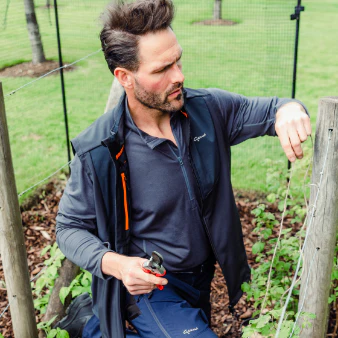Gardeners' notes - what to do in July

Clean greenhouse glass
Last month we recommended different forms of shading for your greenhouse. Whether painted on or draped over, it is only usually only required on the south side of the building. This leaves plenty of unshaded glass available to allow light to get through to your plants.
Unfortunately, at best, clean glass allows only 90% light penetration making cleanliness of utmost importance - you don’t want light levels dropping to 80% and below. To clean the glass we use a garden sprayer. Filled with water and a squirt of washing-up liquid it’s sprayed on to soften the dirt and in our case sticky residue that drops from aphids on nearby sycamore trees. This is followed with a telescopic brush that has a hose attachment.
Some scrubbing is often required to remove the dirt and it’s then that we realise just how dirty the inside of the glass has become. We repeat the process on the interior, a job which is complicated by the dirty water raining over us as we scrub. The results are always eye opening. Not only do the plants benefit but it really does look wonderful especially in a garden that is often the location for videos and photoshoots.
Cut back tired perennials
Lupins, oriental poppies, and many geraniums will be past their best in July and drastic action is called for to keep the borders looking fresh. All can have their foliage and spent flower stems cut to the ground. It seems brutal and will leave a bit of a gap for a few weeks, but if left untouched. they’ll continue to look dour and tired for the rest of the year. Once cut down we like to give the plant a weak seaweed feed. Very soon a nice mound of foliage will fill the vacant space. In a good year they’ll give a second flush of flowers too.
Remove spent flower stems on Euphorbias
Euphorbias will be past their best by now and the flower heads will have lost their wonderful acid greens and be fading to yellow and brown. To keep the garden looking spick and span it’s good practice to remove these flower stems. Wear eye protection, gloves and cover your arms while working on Euphorbias as the white sap can cause burning of the skin.
Using secateurs cut the flowered stems as close to the ground as possible. Try not to leave six inches of stem remaining -it may appear effective but these spikey stumps prevent you from cutting lower in future and you end up with cuts getting higher and higher over the years causing an unattractive congested clump to form. The cut stems can be thrown on the compost heap.











